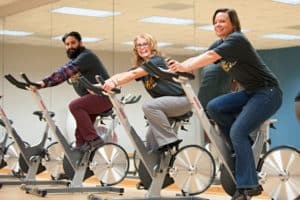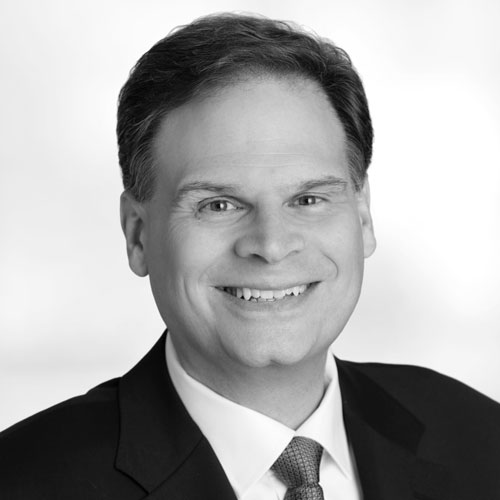Anita Shaughnessy has been in corporate wellness for nearly as long as the field has existed. In fact, it was during some of her first tenures at General Foods and Citi where she led fitness classes and organized employee volleyball games. At the time, her focus may have been on fitness, but there was an unexpected benefit to the programs she was developing.
“When I look back, I realize that some of those activities are really the core foundation of driving culture and engagement with team members,” Shaughnessy says.
Now, as vice president, well-being benefits manager, at Wells Fargo, she is bringing that same culture and engagement to employees firsthand. When she joined the company in 2013, the wellness program was only available to employees who were covered through the company’s healthcare plans. Shaughnessy knew that health issues affect business results as much as healthcare claims do, so she expanded the program to the entire population and renamed it to well-being. “You need to have the programs within the context of the culture,” she says.

Next, Shaughnessy partnered with the sustainability, philanthropy, and corporate properties groups to create a view of well-being that extends beyond physical health. Her team worked with the sustainability group to create a bike-to-work campaign, which encourages physical activity, lowers carbon emissions, and reduces the need for additional parking spaces. “There’s a lot of shared messaging and shared agendas that you can capitalize on,” she says. “When you have this messaging, it continues to reinforce that to team members across the spectrum.”
To engage team members in developing well-being programs, she created a network of champion teams. These teams form walking clubs, raise awareness around healthy eating, and plan events, which creates a healthy community and healthy habits.
In 2016, Shaughnessy’s team partnered with Rally Health to offer Rally, a digital health platform that members can use to compete in individualized challenges, as well as set and track personal health goals and earn rewards along the way. To launch Rally, Shaughnessy’s team worked with the champion team in Charlotte, North Carolina, to organize a daylong celebration. They hosted NFL running back Jonathan Stewart as their health ambassador for the day. About two thousand team members attended the event, thanks, in part, to the champion team’s organizational efforts.
“Wells Fargo stands out among large employers for its commitment and efforts—led by Anita’s amazing team—to seamlessly integrate well-being into all corners of the enterprise and to provide employees with a digital platform that empowers them to adopt healthy behaviors,” says Rhett Woods, chief creative officer at Rally Health.
Along with digital tools such as Rally, Shaughnessy has refined physical amenities that make choosing healthy options easier. The well-being group partnered with the corporate properties group to modify the built environment through initiatives such as indoor and outdoor walking trails. “If you think about the workplace environment, it’s a natural place to build in the opportunity to make health the default option,” she says.
Then in 2017, the wellness team completed a pilot test of walking treadmill workstations at four locations. The treadmills, which are in private conference rooms and have adjustable desk attachments, are programmed to operate at a maximum of two miles per hour. “The idea is not that you’re going to be burning massive numbers of
calories,” Shaughnessy says. “The idea is just to keep your body in motion while at work.”
Employees had been asking for treadmill workstations since Shaughnessy joined Wells Fargo. In addition to improving health and well-being, the visual presence of the walking treadmills also helped reinforce the company’s commitment to the team.
Along with employee feedback, the well-being team uses anonymized health data to inform their strategy. In 2018, they are scheduled to roll out a digital weight management program called Real Appeal, which is aimed at those who are at risk of developing chronic health conditions due to their weight. “Without having that health claims data to look at the rate of diabetes and metabolic syndrome within our population, we would not have the wherewithal to consider that as an intervention,” Shaughnessy explains.

Early on, Shaughnessy met with stakeholders to learn what barriers their teams faced in utilizing the well-being tools. Tellers, for example, didn’t take the health assessment because it was only available on a PC, and tellers service their customers using a different computer. Now, the assessment is delivered as an app. “Things like that really helped me to understand how to tailor our efforts,” she says. “I can’t sit here in a tower and design programs and expect them to be successful without understanding the needs and interests of our total population.”
By completing the health assessment or watching a video about navigating healthcare, team members can learn about their health status, and they can earn dollars toward their healthcare costs. In 2016, Wells Fargo awarded roughly $80 million in health and wellness dollars. In 2017, the company expects to exceed about $89.5 million.
Changing the culture surrounding well-being requires more than simply providing tools. Shaughnessy works with leaders to give team members permission to move and stretch when they need to, especially in long meetings. “It’s those cues coming from leaders and managers that really help to reinforce the messaging and the success of what we’re trying to do day-to-day,” she says. With those norms established, it’s not uncommon to see people stretching at their workspaces or raising their adjustable desks to standing height.
Corporate wellness programs have come a long way since Shaughnessy’s career began, and healthcare claims have moved from the centerpiece of corporate wellness to merely one factor. “If you just look at healthcare claims, you’re really being shortsighted, because while it does have an impact on cost, it’s a very long tail,” she says. “Well-being has a broader impact on the overall value proposition of what it feels like to work for a company like Wells Fargo.”
Photos by Shawn Photography Group

